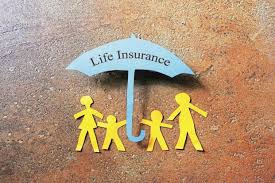 Disclaimer: This article does not constitute medical advice. It’s for informational purposes only. Always discuss anything health-related with qualified medical personnel especially if you are diabetic.
Disclaimer: This article does not constitute medical advice. It’s for informational purposes only. Always discuss anything health-related with qualified medical personnel especially if you are diabetic.
Your application for diabetic life insurance may be rejected for many reasons. Fitness, overall health condition, the presence of other illnesses, lifestyle habits, age, and how long it has been since you were diagnosed with diabetes are only some of the possible reasons for a denial of life insurance. In any case, being rejected, while deeply unpleasant, doesn’t mean you don’t have other options to get insured. Before that, however, it’d be best if you could find the reason why you didn’t get the thumbs up.
Lifestyle Changes
You know the drill—for a company to sign (underwrite) life insurance it needs to assess the risk of having to fulfill the insurance claim. As someone with diabetes, you are already considered high-risk as one of the many unpleasant sides of the illness is a higher mortality rate compared to non-diabetic people. What also matters is your type of diabetes—Type 1 is considered higher-risk than Type 2.
But in assessing your overall eligibility for a life insurance an underwriter will look into more than diabetes-related issues—your overall lifestyle is taken into account. Unhealthy habits such as smoking, alcohol, recreational drug use, poor diet, and sedentary lifestyle will also affect your premiums and the likelihood of being approved for insurance.
The human organism is a holistic system so failing in one domain (say, diet) undermines the whole. In other words, if your lifestyle is the cause for getting a “declined” from an insurer, you need to address all issues—from diet to sleep. Apart from your healthcare provider, the American Diabetes Association‘s website can be a helpful resource for information relating to diabetes and lifestyle.
Change Insurance Agents
When you apply for life insurance for people with diabetes, it matters a lot who is helping you go through the process. Some insurance agents may be inexperienced or misinformed when it comes to diabetes-related life insurance. Trusting somebody to find you the best options is a lot like trusting a lawyer to argue your case on your behalf. It might sound cynical but applying for insurance and getting a “yes” is about proving to the company that it won’t lose money on you.
Some companies specialize in consulting on insurance options for high-risk groups—people with diabetes, heart conditions, weight problems, and senior citizens. American Term—one such insurance consultancy service, has a record of successfully getting people with diabetes approved for life insurance. Some of their clients were insured despite having Type 1 diabetes, accompanying illnesses or receiving a prior rejection.
No-Exam Life Insurance
There are insurance companies that offer no-exam life insurance options. If you were previously rejected due to showing poor results at the physical exam, this is an alternative you may consider. No-exam, however, means just that—your medical records will still be reviewed, along with other factors that relate to your life expectancy.
You’ll also have to fill in a life insurance diabetes questionnaire. If your answers do not coincide with your medical records, you are likely to get another refusal. Life insurance policies come with a two-year contestability period meaning that the company can terminate the contract within two years if it finds out that you have been untruthful with your answers.
Because you already have at least two high-risk factors—diabetes and refusal to do an exam, premiums for such a policy will run higher than for life insurance for diabetics which requires an exam. On the upside, this option is suitable for people with Type 1 diabetes who worry that their blood and urine tests will disqualify them for insurance.
Guaranteed Acceptance Life Insurance
If you’ve been denied life insurance because of reasons out of your control—such as advanced age or having been diagnosed with diabetes for a long time, you can opt for a guaranteed acceptance life insurance. This is an insurance option with a much lower barrier for approval than “regular” coverage. Limitations, however, still apply as most guaranteed insurances do not allow applicants below or above a certain age (usually 45–85).
This is a viable choice if you’ve exhausted other options but keep in mind that guaranteed acceptance life insurance usually comes with higher premiums and lower coverage than “regular” life insurance. Another drawback is that in case of death due to an illness, it will take a couple of years before the insurance coverage is paid in full.
Don’t get discouraged merely because a company rejected your application for life insurance. There are alternatives and people who will be willing to help you out in figuring out the best option. If you understand how insurance companies do risk assessments, you’ll know what you can do better the next time you apply.


No Comments